No products in the basket.
‘Any day you had gym class was a weird school day. It started off normal. You had English, Social Studies, and Geometry, then suddenly you’re in ‘Lord of the Flies’ for 40 minutes. You’re hanging from a rope, you have hardly any clothes on, teachers are yelling at you, kids are throwing dodge balls at you and snapping towels – you’re trying to survive. And then it’s Science, Language, and History. Now that is a weird day.’ – Jerry Seinfeld, Comedian.
The good old days, eh?! Fortunately, nowadays, the school gym lesson is looking a whole lot better. In fact, the gym is becoming more than just a lesson; it is an organic concept, infusing many aspects of school life. Not only can it improve the health, fitness, wellbeing and mental health of your students but it can generate extra income, boost community involvement and improve staff retention.
Therefore, choosing the right equipment for your school gym is essential if you want to optimize its positive impact on school life and cater for all users and situations.
First of all, let’s take a look at the gym for gym lessons.
As adults, we realise that children today don’t have as much freedom to run and play with friends on streets or in parks as they would in the 60’s or 70’s. The effect of this – amongst other factors, such as technology – is that children aren’t exercising as much as they used to which, in turn, is leading to a sharp rise in childhood obesity and stress-related health issues.
The importance of getting children active cannot be stressed enough as there are so many benefits. One solution is for schools to offer more comprehensive fitness equipment at both secondary and primary level.
However, not all students enjoy competitive sports, and some would rather avoid PE. By having the ability to offer an alternative that is not competitive and less intimidating; it will help increase participation and activity.
It is well worth taking the time to survey students directly to ask them what sort of activities and equipment would suit their needs and interests and encourage them to have a positive view of directed lessons in the gym as well as making the best of independent use. Think about locker rooms too as, unfortunately, they can be a place of judgment and fear for students. Dividers and cubicles can accommodate those who feel uncomfortable changing in front of peers and multiple, spacious areas can seem less threatening.
As for the gym itself, remember that very basic equipment can be extremely effective, quick and easy to use and not so daunting for the less confident or initially unfit student. Worth having a range of resources that can provide the fundamentals for inclusive class lessons and enable students to feel they have a place in the gym at any time. Consider:
- Free Weights – dumbbells, barbells or kettlebells. These simple items can be used by everyone and for a variety of different goals.
- Straightforward cardio equipment such as treadmills, rowing machines, stationary bikes and elliptical cross trainers provide accessible exercise routines for heart health and specific muscle group workouts, whilst also offering students the chance to set their own trajectory.
- Stability balls are inexpensive, making them useful for group activities, and every movement challenges the participants’ strength and balance.
- Medicine balls are fantastic for individual, group and functional training. Specific exercises using medicine balls target specific muscle groups so you can have a fully dynamic and diverse workout with just one piece of equipment.
- Resistance bands are simple and completely unintimidating for most people. They are adaptable to suit all abilities but very effective for adding resistance to exercise and building up muscle tension. The result is an increase in strength, just like with free weights, but a better level of comfort for some users.
- Provision of quality mats is essential. They provide a base for so many individual and group activities and fitness sessions performed in a seated, kneeling, or lying down position.
Setting-up friendly fitness competitions is one way to engage pupils. Running or cycling league tables can help students work to a project, analyse goals and nurture a spirit to succeed. You can also incorporate the gym into curriculum work. Studying what happens to the heart and body when active can also inspire pupils to get exercising.
What is more, contemporary gyms can be created almost anywhere within a school.
For a school environment, a gym can be set-up in an unused classroom or dead corridor space. Even a large storage room could be transformed into a workout area. If you’re looking to add new buildings to your existing campus, then this is also a great time to think about allocating space for a gym.
As use of your gym increases and a focus on fun through fitness pervades the school, students may become more ambitious and you can look at ways of expanding your resources. You may even wish to consider adding an outdoor gym to your repertoire to offer fresh air workouts and breaktime exercise opportunities. Some schools have found that their gym really does become central to the school community, both within and outside the core curriculum.
‘The sports hall houses our new state of the art gym, which is used by all of our students irrespective of sporting ability. The gym offers the opportunity for our elite athletes to continue to develop their athletic ability through sessions with our Strength and Conditioning Coach and also offers an opportunity for our students who don’t participate in core sports to stay active.
The gym is equipped to an Olympic standard and is used as a satellite centre for Northampton Saints Academy, who run their Under 15 and 16 strength and conditioning programme from Finborough. We are constantly developing our facility and programmes in order to best support all Finborough students in their physical development.’
Obviously, not every school wants or needs to aspire to the Olympic standard! However, there is so much that can be added slowly to even the most basic gym to expand the user experience and reinforce its role within the school as a centre of learning, discovery and self-improvement. As your gym grows, so may your user demographics so it is always worth keeping an eye on fitness trends and interests emerging in your school and wider community.
This observation can be surprisingly simple to achieve as, these days, the technology involved in a student gym can track, record data, and motivate participation. Whilst being respectful of GDPR rules, this can be utilised as a gauge on the health of the school, by showing how students are maintaining their wellbeing. Equally, gyms in schools that are made available for staff personal use can contribute to in-house benefits that significantly improve staff retention. Furthermore, a quality gym within a school can be operated outside of school hours to create a community hub – generating much-needed revenue streams back into the school.
The key to setting up a school gym which has the potential to expand beyond fundamental lessons to become a popular core school resource – improving student well-being and fitness, staff health and retention, the status of the school within the wider community, and even school finances, lies in:
- Understanding your students’ needs, abilities and attitudes towards exercise and the gym.
- Fostering a sense of inclusivity.
- Providing equipment that is inviting, accessible and varied.
- Encouraging teachers and support staff to view the gym as a positive resource and to promote health, fitness and exercise through other curriculum areas.
- Providing professional coaching opportunities to ensure students gain positive initial experiences that give them confidence to establish their own goals and fitness ambitions.
- Observing carefully how the gym is used and developing trends so as to expand provision to maintain momentum.
- To assess how the gym can be used to enhance staff and extended community involvement.
- To consider the finance and maintenance implications of introducing and developing a gym and to see how these can be turned around to create income.
Read our article on Fitness Suite Safety in Schools.
Fitness Packages
